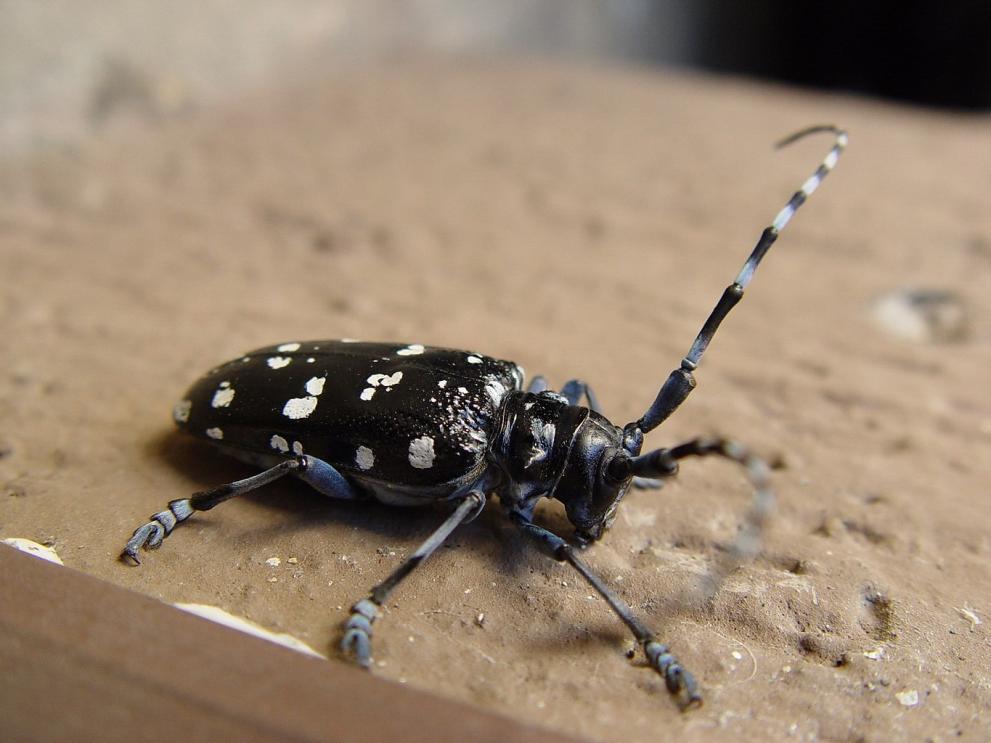
Biological invasions are predicted to increase, alongside wider pressures on natural resource-based industries such as agriculture, forestry and fisheries. The combination is expected to increase the worldwide impact of invasive alien species.
Researchers estimated the costs to seven major primary natural resource-based economic sectors, and then focused on agriculture, forestry and fisheries where costs are high. They profiled the introductory pathways of 180 species1 which represent 31% of all costs incurred in those three sectors2, using a global database of invasive species costs, called InvaCost. They assessed individual countries’ vulnerabilities to invasive species in terms of economic losses and reliance upon agriculture, forestry and fisheries.
Furthermore, when they combined the results to a second database, called the CABI Invasive Species Compendium, it revealed there are many further hidden economic costs from non-native species. In agriculture 24% of invasive species were assessed and reported on both systems, in fisheries it was 34% and for forestry 25%.
From 1970 to 2020, the total estimated costs ranged between US$1 billion (95 million euros) for fisheries including aquaculture, to US$509 billion (484 billion euros) for agriculture. The global cost from biological invasions to the three primary economic sectors was estimated at more than US$644 billion (612 billion euros).
In Europe, the United Kingdom suffered the greatest total cost during the period, followed by Ukraine, France, Romania, Hungary, Norway, Germany and finally Portugal. Globally, countries with a higher reliance on primary sectors tended to face higher costs from biological invasions, with 19 countries experiencing disproportionately large economic impacts from biological invasions, predominantly in the global south.
Globally, agriculture was the sector most impacted. Mammals and insects caused the most damage to agriculture. Insects and other uncategorised animals did most damage to forestry. Fish and plants cost the most to fisheries. Invasive species introductory pathways seemed better captured and understood within forestry, where 84% of costs were attributed to identified species. In agriculture, 83% of costs came from diverse and unspecified species.
Most European countries saw the highest impacts in agriculture, but Finland, Estonia, Lithuania, Greece, Denmark, Germany, Belgium, Spain and Iceland saw the greatest impacts on authorities and stakeholders. Health was the most impacted sector in France and North Macedonia. Forestry was most impacted in Sweden, Canada and China.
The highest costs and the highest number of species recorded were the results of unintentional introductions, for example as contaminants in transported commodities and stowaways, or for reasons beyond agriculture, forestry, fisheries or culture. A small subset of invasive species caused the greatest costs. In forestry, the bill was US$100 billion (95 billion euros) from just four species which had been unintentionally introduced through the movement of commodities: the emerald ash borer (Agrilus planipennis), the Asian long-horned beetle (Anoplophora glabripennis), the pine wilt nematode (Bursaphelenchus mucronatus) and white pine blister rust (Cronartium ribicola).
Some intentionally introduced invasive species have also been very costly. Among these, 31 species listed in the InvaCost database had been introduced initially to tackle existing agricultural problems, but 24 of those then generated more costs to agriculture. Furthermore, the impacts were frequently felt beyond the original introduced pathway. One such example is the escape and naturalisation of popular horticultural/garden plants. In our globalised economy, knock-on effects can reverberate along supply chains between countries.
The researchers consider their figures to be conservative. Reported costs to fisheries were substantially below predicted costs, suggesting underreporting. Marine biological invasions are more difficult and costly to monitor than terrestrial invasions. They have called for more data gathering including on costs and pathways, and for national economies to develop structured approaches to cost reporting on biological invasions, using frameworks such as InvaCost, so that knowledge gaps can be addressed, and better management decisions can be made.
Footnotes:
1. Pathway information was only available for 180 species. Other costs were attributed to multiple, other or unspecified species; and therefore, could not be attributed to a specific pathway.
2. Most species mentioned, and most listed quarantine pests are not covered by the IAS regulation under EU law, but by the Directorate General for Health and Food Safety (SANTE)’s Plant Health Regulation.
3. For context, many management costs undertaken by conservation and biosecurity agencies are categorised in this sector.
Reference:
Turbelin, A.J.; Hudgins, E.J.; Catford, J.A.; Cuthbert, R. N.; Diagne, C.; Kourantidou, M.; Roiz, D. and Courchamp, F. (2024) Biological invasions as burdens to primary economic sectors. Global Environmental Change: 87: 102858.
To cite this article/service:
“Science for Environment Policy”: European Commission DG Environment News Alert Service, edited by SCU, The University of the West of England, Bristol.
Notes on content:
The contents and views included in Science for Environment Policy are based on independent, peer reviewed research and do not necessarily reflect the position of the European Commission. Please note that this article is a summary of only one study. Other studies may come to other conclusions.
Details
- Publication date
- 24 February 2025
- Author
- Directorate-General for Environment
Contacts
A.J. Turbelin
- Name
- A.J. Turbelin
- anna [dot] turbelin
 nrcan-rncan [dot] gc [dot] ca
nrcan-rncan [dot] gc [dot] ca
E.J. Hudgins
- Name
- E.J. Hudgins
- emma [dot] hudgins
 carleton [dot] ca
carleton [dot] ca

